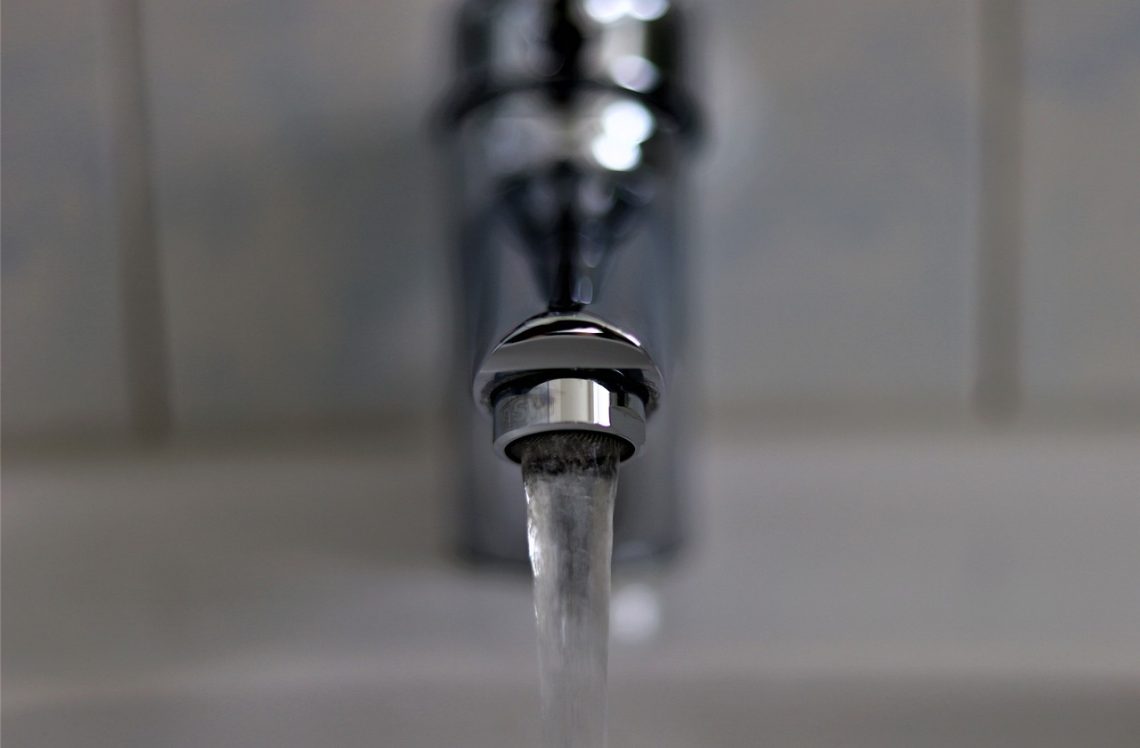Per- and polyfluoroalkyl substances (PFAS) are a significant class of synthetic compounds that are widely employed in a variety of industrial and consumer goods. Known for their persistence in the environment and in human bodies, PFAS chemicals have become a significant environmental and public health concern.
One of the most concerning features of per- and poly-fluoroalkyl chemical pollution is their presence in drinking water. A ScienceDirect study examines their presence by assessing over 700 private and public-supply tap water supplies in the US. The results conclude that at least PFAS chemical was found in 45% of the samples.
Understanding how per- and poly-fluoroalkyl substances have infiltrated tap water involves exploring their sources, pathways, and the regulatory challenges of controlling their spread. Here’s all you need to know about how these contaminants enter tap water.
The Origins of PFAS
Per- and poly-fluoroalkyl substances and chemicals were first developed in the mid-20th century due to their unique properties.
According to a Wiley Online Library article, the simplest perfluorocarbon, carbon tetrafluoride, was first synthesized in 1886. Other perfluorocarbons have been manufactured since at least the 1930s. However, per- and poly-fluoroalkyl substances-containing functional groups have been manufactured since at least the 1940s. The first fluoropolymer patent was submitted in 1934.
These substances are perfect for a variety of applications since they are heat, oil, and water-resistant. They have been used to make food packaging, water-repellent clothes, firefighting foams, stain-resistant carpets and textiles, and nonstick cookware.
The growing usage of per- and poly-fluoroalkyl compounds in industrial processes and consumer items has resulted in significant environmental damage. Manufacturing facilities, military bases, airports, and areas where firefighting foam has been used are notable hotspots for PFAS pollution. Over time, these chemicals have leached into the soil and groundwater, contaminating drinking water sources.
Pathways to Drinking Water Contamination
Per- and poly-fluoroalkyl substances can enter drinking water supplies through several pathways, primarily due to their extensive use and persistence. As stated by NBC News, PFAS are almost tough to eliminate due to their strong carbon-fluorine linkages. They are destroyed by exposure to high temperatures, but that still releases some harmful chemicals into the environment.
Due to this persistence, PFAS chemicals remain in the environment forever; hence, the nickname “forever chemicals.” Thus, they can enter water bodies and groundwater and find their way into the tap water supplied across the country.
One significant pathway is through industrial discharge. Factories manufacturing or using PFAS in their production processes often release these chemicals into the air, water, and soil. For decades, wastewater from these facilities was often discharged into rivers and lakes, which are drinking water sources for many communities.
Another major source of contamination of per- and poly-fluoroalkyl substances is the use of firefighting foams. Aqueous film-forming foams (AFFFs), which contain high levels of PFAS, have been widely used for suppressing fires. When these foams are employed, they can seep into the ground and pollute nearby water sources.
Due to the presence of PFAS in AFFFs, firefighters are constantly exposed to these chemicals, making them vulnerable to numerous health problems. TorHoerman Law says that firefighters who were exposed and went on to develop any medical condition have filed lawsuits against manufacturers. They claim the manufacturers knew or should have known about these possible health concerns and informed them.
As the number of lawsuits increased, they were consolidated into multidistrict litigation. According to the latest AFFF lawsuit update, there are currently 8,061 cases pending in this MDL as of May 2024. Around 300 new cases were filed in April 2024 as more firefighters were diagnosed with health problems associated with AFFF exposure.
Regulatory and Monitoring Challenges
Regulating PFAS chemicals presents numerous challenges due to their chemical complexity and widespread use. In the United States, the Environmental Protection Agency (EPA) has established health advisory levels for PFOA and PFOS in drinking water. Both chemicals have a limit of 4.0 parts per trillion, which is considered safer by the EPA. This has resulted in a patchwork of state-level rules, with some jurisdictions enacting harsher limitations.
Monitoring and testing for per- and poly-fluoroalkyl substances in drinking water is also a significant challenge. The sheer number of PFAS compounds—over 4,000 identified—makes comprehensive testing difficult and expensive.
Standard testing methods typically focus on a few well-known per- and poly-fluoroalkyl substances chemicals, potentially missing other harmful variants. Furthermore, many water utilities lack the resources to conduct regular, extensive PFAS testing.
Efforts to Mitigate PFAS Contamination
Addressing per- and poly-fluoroalkyl chemical pollution in drinking water necessitates a multidimensional strategy that includes governmental action, technical innovation, and community involvement.
The European Union, for instance, has taken more stringent measures, including proposing restrictions on the production and use of certain PFAS chemicals. In the United States, several states and cities have enacted their regulations and are pushing for more comprehensive federal action.
For example, an NBC News article states that San Francisco is all set to ban the forever chemicals in firefighter gear. If lawmakers vote in favor, it would become the first US city to do so. If passed, it will offer a grace period until June 30, 2026, to allow the city’s firefighting departments to buy alternative gear.
Technological solutions are also being developed to remove per- and poly-fluoroalkyl substances from water supplies. Advanced filtration systems, such as granular activated carbon (GAC) and high-pressure membranes like reverse osmosis, have effectively reduced PFAS levels in water. However, these technologies can be costly and may not be feasible for all communities, particularly those with limited financial resources.
Frequently Asked Questions
How was PFAS discovered?
Per- and poly-fluoroalkyl substances were found in the mid-twentieth century, while novel materials with distinctive features were developed. These compounds were discovered to be extremely resistant to heat, water, and oil, resulting in extensive application in several items.
How may PFAS be detected?
Since these chemicals can be accurately identified, techniques like liquid chromatography coupled with tandem mass spectrometry (LC-MS/MS) are frequently employed. Environmental sampling frequently includes testing water, soil, and air, while human exposure is measured via blood and urine tests.
Does filtering tap water reduce PFAS?
Standard household water filters, such as those containing activated carbon, may somewhat lower per- and poly-fluoroalkyl substances levels but are not completely efficient. More modern technologies, such as reverse osmosis or ion exchange, are thought to effectively reduce PFAS amounts in drinking water.
To summarize, PFAS chemicals have found their way into tap water through industrial activities, firefighting foams, landfill leachate, and inadequate regulatory oversight. There are serious environmental and public health issues as a result of their enduring usage.
Addressing per- and poly-fluoroalkyl substance contamination requires comprehensive regulatory action, technological advancements, public awareness, and international collaboration. As we continue to grapple with per- and poly-fluoroalkyl substance pollution, it is crucial to prioritize the protection of drinking water sources and public health. We can work together to ensure that everyone has access to safe, clean drinking water.
Read more environment articles at ClichéMag.com
Images provided by Deposit Photos, BingAI, Adobe Stock, Unsplash, Pexels, Pixabay & Creative Commons




